 This article on English Bulldogs is part of a series to highlight the Big Picture of health, welfare, and breeding and to help develop Globally Relevant Integrated Health Profiles (GRIHPs) for many breeds. See IPFD's Get a GRIHP! on Breed Health Initiative.
This article on English Bulldogs is part of a series to highlight the Big Picture of health, welfare, and breeding and to help develop Globally Relevant Integrated Health Profiles (GRIHPs) for many breeds. See IPFD's Get a GRIHP! on Breed Health Initiative.
There are many others doing great work to advance health, well-being, and welfare in this wonderful breed. We reference and link to terrific work, developments, reports, and research from the UK, USA, Sweden, Finland, and more below. Thanks to all of those working on behalf of Bulldogs.
This is a 'living document' - so if anyone has more material to share or point us to - please let us know!
Concerns for the welfare of brachycephalic breeds, including the Bulldog, have been the subject of much debate over the past several years. Based upon Kennel Club registrations, the Bulldog is considered a popular dog in the UK and US among the community of purebred dog enthusiasts. Demand for these dogs has led to production of pups by less than scrupulous breeders who are not operating under the umbrella or direction of Kennel and Breed club health improvement program recommendations.
Health management and breeding strategies constructed by Kennel and Breed clubs are focused on identifying the prevalence of and effective methods to address key health concerns in the breed. In some cynological organizations Breed Standard wording has been clarified to minimize the acceptability of extreme traits. Never-the-less, in 2020 legislative action was taken by the Netherlands government to regulate breeding of Brachycephalic breeds with the goal to enhance health and welfare. Additional legislative processes are underway in several other countries in Europe, most recently in Norway.
It is hoped the information in this article will assist all stakeholders to see the Big Picture - internationally - for the Bulldog. The information should help the veterinary community to guide clients and to educate potential owners in determining whether a Bulldog is the right breed for them. Sourcing of puppies from breeders who practice critical, rational, logical thinking about breeding decisions focused on health and welfare of the dogs produced and kept as companions is an important pre-purchase consideration for anyone with an interest in obtaining a Bulldog. However, more than one research study has shown that people who are attracted to the appearance and character of Bulldogs, do not prioritize health when they are acquiring one of these dogs, and, in spite of serious and costly veterinary care, as well as suffering for the dog and the owner, many indicate that they would purchase another one. Why do people choose the dogs they do - and what is the impact on dog health and welfare?
Table of Contents
Breed at a glance
Bulldogs love to live indoors and be part of the family. They are generally amiable and easy-going, but can be stubborn. Estimates of lifespan vary from >6-7 to over 10 years of age. Care should be taken in breeding management of this breed to avoid selection of dogs with extreme morphological traits - traits which can lead to dogs suffering from a variety of health conditions. See sections below for more information.
Key Health Conditions
"Some aspects of the Bulldog conformation, such as short muzzles and wrinkled faces, are associated with health problems."* ...
From the UK-based research, the most common disorders of bulldogs along with other health and welfare information are available in a VetCompass Infographic - Bulldogs in the UK Facing up to some challenges
 Due to how the dogs are built, "Bulldogs are reported as predisposed to several health disorders, including brachycephalic obstructive airway syndrome (BOAS), dystocia, patellar luxation, seizures, corneal ulcers and spinal disease associated with vertebral malformations." (*source: Disorders of Bulldogs under primary veterinary care in the UK in 2013)
Due to how the dogs are built, "Bulldogs are reported as predisposed to several health disorders, including brachycephalic obstructive airway syndrome (BOAS), dystocia, patellar luxation, seizures, corneal ulcers and spinal disease associated with vertebral malformations." (*source: Disorders of Bulldogs under primary veterinary care in the UK in 2013)
Similar health considerations to those identified in the VetCompass study are mentioned by multiple breed clubs, reported in scientific research investigations and represented in pet insurance data claims reports.

-
Skeletal issues (spinal problems and vertebral deformations, hip and elbow dysplasia, knee and patella issues, screw tail)
-
BOAS (Brachycephalic Obstructive Airway Syndrome)
-
Skin issues
-
Eye issues
-
Reproduction issues (dystocia / whelping difficulties; normal mating behaviours)
-
Teeth problems
Health conscious bulldog breeders pay attention to health issues that can impact these dogs' quality of life. Dogs used for breeding should be physically sound and unburdened by health conditions that are known to occur in this breed.
What do caretakers need to know
-
Weight management (extra pounds exacerbate known musculoskeletal issues - HD, ED, Patella, Spine)
-
Appropriate exercise (healthy BDs should be capable of free movement and participation in light to moderate daily exercise [short 10-15 minute sessions 2-3X a day]. Remember, bulldogs are known to suffer from heat intolerance and thermoregulation issues. The impacts [heat exhaustion/heat stroke] can be worse in dogs with breathing issues)
-
Attention to skin folds (BDs skin folds need to be gently cleaned regularly to avoid infections)
-
Attention to teeth (BDs are more prone to tartar buildup on their teeth because they are brachycephalic, or short-nosed - periodontal disease, or gum disease not only affects the teeth, but can impact overall health)
-
Perceive the clinical signs of brachycephalic obstructive airway syndrome (BOAS) (snorting, snuffling, wheezing, grunting, loud snoring) as welfare problems, rather than normal, breed-specific characteristics. These clinical signs are NOT CUTE - they are evidence of a BREATHING problem!!!
-
Treating Veterinarians: Anesthetic use - considerations - see World Small Animal Veterinary Association Congress Proceedings, 2017: Anaesthesia for the Brachycephalic Patient
See the Bulldog Club of America's Bulldog maintenance page for tips.
Statistics and Health Strategies
Population Statistics
Context: In most countries, the kennel clubs register a relatively small percentage of all owned dogs. The exception is in the Nordic countries where a higher percentage of dogs may be registered. Certainly, in most countries the majority of pets come from dogs bred outside the national kennel club, or at least not registered within it.
English Bulldog: Popularity Notes

Kennel Club registrations of Bulldogs in the UK show a substantial rise in number of dogs from 2011 to 2020.




Bulldogs have long been considered a popular breed in the US (AKC). AKC Registration information in the chart above was obtained at: https://bulldogclubofamerica.org/news/just-one-more/ - The Bulldog Club of America. Several comments made in this write-up regarding registered litters vs registered dogs provide insights. Registration of individual dogs with AKC indicates the breed's ranking dropped in 2021; the percentage of bulldogs relative to all AKC registered pups has risen slightly. The AKC Ranking during 2014-2018 shows bulldogs at wavering between the 4th and 5th rank - https://www.akc.org/expert-advice/news/most-popular-dog-breeds-full-ranking-list/ and in 6th rank for 2021 - https://www.akc.org/expert-advice/dog-breeds/most-popular-dog-breeds-of-2021/. Please recognize that individual pup/dog registrations from AKC do not reflect the number of dogs born.
Health and Statistics
Agria - Swedish Breed Profiles
 CONTEXT: For many years, Agria Animal Insurance, Sweden (Agria Djurförsäkring, Stockholm, Sweden) has supported veterinary research and provided statistics on diagnoses for health and life claims to Swedish breed clubs. See Breeds with Swedish Insurance Data and Agria Breed Profiles (where breeds are compared to All Breeds)! We recommend that you download the Agria Breed Profiles for the English Bulldog and study them for full available information. Some excerpts are shown below! The great benefits of the Swedish insurance data are that they include almost 40% of the national population of dogs, so are very representative; note that animals at very old ages are likely under-represented. Most importantly, information is available on all insured dogs, not simply those who get sick or die. This allows calculation of population-based rates (expressed as events per 10,000 years-at-risk) as well as risks and proportions. Statistics are presented as overall morbidity (rate of one or more veterinary care events [VCE]) or mortality (death), by general diagnostic categories, and by specific diagnoses.
CONTEXT: For many years, Agria Animal Insurance, Sweden (Agria Djurförsäkring, Stockholm, Sweden) has supported veterinary research and provided statistics on diagnoses for health and life claims to Swedish breed clubs. See Breeds with Swedish Insurance Data and Agria Breed Profiles (where breeds are compared to All Breeds)! We recommend that you download the Agria Breed Profiles for the English Bulldog and study them for full available information. Some excerpts are shown below! The great benefits of the Swedish insurance data are that they include almost 40% of the national population of dogs, so are very representative; note that animals at very old ages are likely under-represented. Most importantly, information is available on all insured dogs, not simply those who get sick or die. This allows calculation of population-based rates (expressed as events per 10,000 years-at-risk) as well as risks and proportions. Statistics are presented as overall morbidity (rate of one or more veterinary care events [VCE]) or mortality (death), by general diagnostic categories, and by specific diagnoses.
Relative Risk Morbidity of English Bulldog compared to All Breeds: 1.58 as high as All Breeds.
Relative Risk Mortality of English Bulldog compared to All Breeds: 2.36 as high as All Breeds.
Overall and specific causes - relative risks for all dogs - morbidity (veterinary care visits) and mortality (life claims):
(Categories are shown only if at least 8 animals had the diagnosis.)



Other statistics from the Swedish Insurance Data:



Research based upon Swedish Insurance Data... Bulldog knees/cruciate are covered.

Figure 1. Dog breeds with increased or decreased relative risk (RR) of a veterinary care claim for cruciate ligament rupture (relative to the rest of the population with the breed excluded) in a cohort of dogs insured in Agria Pet Insurance in Sweden (2011–2016). All RRs in the figure were significantly different from 1, after Bonferroni correction based on the number of breeds included in the comparison, n = 339. Note that RR = 0.5 means 2 times decreased risk, RR 0.125 means 8 times decreased risk and so on. DYAR dog-years at risk, CI confidence interval.
Finland: English Bulldog Mortality Data 2012-2021
Comment: The most frequent causes of death are old age and cancer. Cancer causes death/euthanasia at an average age of 7,5 years - this reduces the average lifespan, which is 10 years for dogs which die because of old age. Source: Finnish Kennel Club breeding database

Research Finland: Skin and Ear
Skin and ear health in a group of English bulldogs in Finland – a descriptive study with special reference to owner perceptions
Comment: An important point made is that owners may not recognize skin and ear issues as a health concern in this breed.
Excerpt: "Discrepancies between the owner-reported skin problems and clinical findings raise the question of whether the owners of EBs are unaware of dermatological signs, especially when milder. In three cases, the owners reported either pruritic behaviour or previous treatment for dermatitis, although they responded that their dog did not have skin-related problems."
English Bulldog Breed-specific Breeding Strategies
HGTD DNA Tests for Bulldogs
The Harmonization of Genetic Testing for Dogs (HGTD) Basics: The HGTD Searchable Database - Search by Breed, Search by Disease / Test and Search by Genetic Test Provider (GTP) / Lab + Genetic Counselling Resources. HGTD catalogs information provided voluntarily from genetic test providers (GTPs) including information on their company and services, quality measures and expertise, tests offered and more. As of January 2021, the HGTD Database includes 82 academic and commercial genetic test providers (GTPs) in 22 countries. Our searchable genetic phenes (phenes = characteristics/genetically controlled feature) database currently holds information on 300+ phenes across all breeds/types and provides information on each phene: links to the Online Mendelian Inheritance in Animals database (OMIA), gene + mutations, a simple and advanced disease description, inheritance details, links to original publications, patents/licenses, comments from the original researchers/experts on application, and breed specific information (such as research/validation) - where possible. Breed Relevance Ratings (BRR) support evidence-based usage and application of genetic tests. The HGTD database relevance rating indicates the level of available evidence supporting the application of a specific genetic test for a specific breed/type. Currently, the relevance rating is based on a wide variety of evidence sources. This includes peer-reviewed research papers, recommendations from the original researchers/test developers, input from additional experts including veterinary specialists, and breed experts. It is hoped that, by being more informative about what we currently know or do not know about a specific test for a specific breed, that dog health advisors and owners can make more informed decisions. Remember, this Breed Relevance Rating is not everything we need to know about the disease or characteristic; it is focused on the genetic test.
HGTD DNA tests for Bulldogs
SUMMARY: The majority of inherited diseases and conditions for the English Bulldog, particularly pre-breeding tests/exams do not have genetic tests. The few that are available may be particularly helpful for breeding plans where the condition or trait is suspected in the breeding lines to help reduce the risk of passing on a known inherited disease or undesirable trait. In addition to the genetic tests referenced below, concerns have been raised regarding the high levels of inbreeding within the breed. Breeders may wish to seek out appropriate genetic diversity tests or tools.
♦ BIG PICTURE THINKING ♦ Please take into consideration - Most of the conditions with genetic tests are rare in the general population, but valuable for breeders to use to efficiently reduce risks while supporting good genetic diversity in the breed as a whole. See the Genetic Diversity section below. Also be aware that there are many DNA tests that are available for ALL breeds, that while the test itself is valid, the condition may not be a major health concern or included in health strategies for every breed. See the HGTD for a full list of DNA tests including "Trait" and "Parentage" tests.
English Bulldogs: Tests In All Types:
Test: Canine Multifocal Retinopathy 1 (cmr1)
BRR: 
HSP comment: This test may have some relevance to the breed, but it is worth noting that apparently the condition rarely causes vision problems. This may reduce the relative weight a breeder may wish to give the test results in balance with other more complex or welfare-impacting conditions. Especially for this breed, clinical eye examinations are certainly of great value, and this test should not be considered sufficient investigation into all relevant breed-related eye conditions.
Test: Hyperuricosuria and Hyperuricemia (HUU)
BRR: 
HSP comment:
While this condition may be commonly associated with Dalmatian dogs, there are several breed-specific research investigations indicating that this disease may be of concern for some bulldogs. Efficient usage of this test, including inclusion of carrier dogs in breeding plans, could be beneficial for preventing a problem from developing breed wide.
Test: Ichthyosis, NIPAL4-related
BRR: 
HSP comment: This disease has been described primarily in American bulldogs, and American bully. It is unknown how frequently this occurs within the English bulldog or other related bully breeds. It is also considered rare. It does, however, have high welfare consequences for the dog so usage of this test may be especially helpful for any lines or breeding plans where ichthyosis is suspected. Symptoms include: thickened pads of his paws, irritated, flaking skin, may not itch or scab, also can cause thickened skin with scaly and greasy patches and flakes. This can cause water loss, as skin is unable to maintain moisture.
Other breed-specific tests available, relevance unknown: Cystinuria Type I-A , Cystinuria Type II-A, Cystinuria Type II-B, Degenerative Myelopathy, Exercise-Induced Collapse / EIC, Coat Colour Dilution, dilution, MLPH-related
BRR: 
Health Screening Tests for Bulldogs
UK
Bulldog Breed Council UK: Health Scheme, Breed Health Conservation Plan (BHCP) and Health Survey resources
BHCP - The group agreed from the evidence base and their own experience that the priorities for the Bulldog are:
-
BOAS
-
Ocular conditions
-
Cardiovascular conditions
-
Skin conditions
-
Obesity
The Kennel Club lists the following Priority (required for Assured Breeder) and Important health schemes and tests and for Bulldogs here:
Priority:
Important:
-
Bulldog Breed Council Health Scheme to at least:
-
Bronze level
-
Heart – referred to a cardiologist (if any abnormality found).
-
Eyes – with any conditions that are detrimental to the dog’s health.
-
Any sign of aggression.
-
Spine – any palpable abnormality will be referred for further investigation and X-ray. (eg: Spina Bifida)
-
DNA test - HUU . Find lists of tested dogs
Particular points of concern for individual breeds may include features not specifically highlighted in the breed standard including current issues. In some breeds, features may be listed which, if exaggerated, might potentially affect the breed in the future.
-
Bulldogs - Breed Watch - Category 3 - Points of concern for judges/breeders include:
-
Dogs showing respiratory distress including difficulty in breathing or laboured breathing
-
Excessive amounts of loose facial skin with conformational defects of the upper and/or lower eyelids so that the eyelid margins are not in normal contact with the eye when the dog is in its natural pose (e.g. they turn in, or out, or both abnormalities are present)
-
Hair loss or scarring from previous dermatitis
-
Heavy overnose wrinkle (roll)
-
Inverted tail
-
Lack of tail
-
Pinched nostrils
-
Significantly overweight
-
Sore eyes due to damage or poor eyelid conformation
-
Tight tail
-
Unsound movement
See further information on the KC's respiratory function grading scheme.
Screening results - excerpt Bulldogs...


Summary of Kennel Club Breed Records: Bulldog 2021 -- Standard Colour Only
Author: Cassie Smith: (Internal: BulldogBreedRecords2021Standard.pdf)
The Nordic Kennel Union is a cooperative organisation for the Kennel Clubs of Sweden, Norway, Denmark, Finland and Iceland.
Below we list efforts made to address exaggerations in breeds through the NKU country's Breed-specific instructions (BSI). There are six basic criteria defining if a breed should be listed as a high profile breed. Breeds which fulfill these and are thus listed are particularly paid attention to at dog show judging by the judge. Breed-specific details follow concerning the BSI - Nordic Kennel Clubs 2018 (second edition).
Bulldog – brachycephalic and molossoïd type
The extreme conformation of this breed with shortened skull and muzzle, underdeveloped bridge of nose and excessive amount of skin, causes health problems if exaggerated.
Areas of risk are:
1. Breathing: Forced breathing, with pronounced snoring sounds due to short muzzle, pinched nostrils and/or narrow respiratory channels (insufficient room in pharyngeal cavities and airways). “Dogs showing respiratory distress highly undesirable.” “Pinched nostrils and heavy over nose wrinkle are unacceptable and should be heavily penalised.” See Appendix 2.
2. Exaggerated type conformation and insufficient angulation of fore- and hindquarters might result in unsound movement/lameness challenging the standard’s demand: “Soundness of movement of the utmost importance.”
3. Face and eyes: Excessively short bridge of muzzle, excessively loose facial skin and loose eyelids can cause injury and inflammation of the eyes. See Appendix 3. Overhanging nose roll can cause inflammations.
4. Tail: Rigid tail carried tightly over anus may disturb the function to defecate. Skin wrinkles in the anal region can cause inflammations. “Lack of tail, inverted or extremely tight tails are undesirable.”
The standard explicitly states the importance of unconstrained breathing. Dogs with free, sound breathing and breed typical sound action as well as sound skin and eyes shall be particularly appreciated. It is of utmost importance that the tail is movable within the frame of the standard
Finland
Breed-specific breeding strategy (JTO)
See article at FKC: "The kennel club is involved in English bulldog health investigation" (Finnish) and the Resources section below for links to Finnish projects related to understanding Bulldog health issues.
BOAS - Respiratory function test (walk test): https://dogwellnet.com/videos/brachycephalics/the-finnish-kennel-clubs-walk-test-for-short-muzzled-breeds-r15/. There are no walk test statistics in the Finnish Kennel Club breeding database. An article from 2019 shows that 89 % of the 148 dogs tested passed the test. https://www.kennelliitto.fi/en/about-us/news/finnish-kennel-clubs-walk-test-helps-eliminate-dogs-severe-breathing-problems-breeding

A = normal hip joints; E = severe hip dysplasia
While some improvement has been made since 2012, the majority of English Bulldogs are rated as D and E, very few EBs have normal (A, B hip joints.

0 = normal elbow joints; 3 = severe elbow dysplasia
Elbow dysplasia is a problem in the breed, with ~ 20% rated at moderate (2) to severe (3) ED; ~ 50% rated as 0 grade in '20-'21.

Eye exams are done on a relatively small % of dogs; distichiasis, entropion and ectropion are the most common findings.

0 = free; 4 = severe spondylosis
Over 50% of dogs have some degree of spondylosis in the later years.

VA0 = no abnormal findings; VA4 = severe (10 or more malformed vertebrae)
Spine: comment: Almost no dogs have no vertebral anomalies.
See: Palmu, Katariina. (2016) Natiiviröntgenkuvauksella diagnosoidut nikamaepämuodostumat englanninbulldoggeilla. [Licentiate thesis] Department of Equine and Small Animal Medicine; University of Helsinki, Faculty of Veterinary Medicine, Division of Clinical Equine and Small Animal Medicine. University of Helsinki. URN:NBN:fi-fe201804208438.
Sweden
Rasspecifik Avelsstrategi (RAS)
Breeding Healthier Bulldogs – A New Swedish Breeding Strategy for the English Bulldog (This article, in English, includes a translation of the section of the breeding strategy that contains hands on breeding advice.)
SKK’s Checklist (SRD) for writing of critiques for brachycephalic breeds:
https://www.skk.se/contentassets/930b9a107f374f8288962c8ab952f3cb/checklist-for-writing-of-critiques-for-brachycephalic-breeds.pdf
Respiratory function test (BOAS): 8 dogs passed the test during 2019-2021.

A = normal hip joints; E = severe hip dysplasia
D and E ratings are the most common.

0 = normal elbow joints; 3 = severe elbow dysplasia
More than 3/4 of dogs have a degree (1 or 2 grades) of ED.
Norway
Breed-specific breeding strategy (RAS)

A = normal hip joints; E = severe hip dysplasia
Over 3/4 of dogs have a D or E hip rating.

0 = normal elbow joints; 3 = severe elbow dysplasia
Fewer than 1/2 of dogs have normal elbow joints.

Various eye issues impact the Bulldog - dogs determined on exam to have healthy eyes are not in the majority.
France
The Club du Bulldog Anglais Breed Management Strategy Overview

The French Kennel Club BREATH Test Protocol for Brachycephalic Breeds (English)
Patella and Heart screening are recommended health tests.

US
See resources from the AKC parent club: Bulldog Club of America: health information & Bulldog health overview
OFA: CHIC: https://www.ofa.org/recommended-tests?breed=BU
Excerpt: "The OFA, working with the breed's parent club, recommends the following basic health screening tests for all breeding stock. There may be other health screening tests appropriate for this breed. And, there may be other health concerns for which there is no commonly accepted screening protocol available." Participation in CHIC / OFA screening is voluntary. CHIC #s only indicate that the required/recommended tests have been done, not that the results of the tests are necessarily clear/good. Optional tests are not required to obtain a CHIC number. Optional tests are considered as tests for conditions which do or may occur in the breed/family lines.
Required for a CHIC number:
-
Patellar Luxation: OFA evaluation, minimum age 1 year
-
Cardiac Evaluation (One of the following) 1. Congenital Cardiac Exam, exam by Boarded Cardiologist using echo preferred — but not required. 2. Advanced Cardiac Exam Basic Cardiac Exam, exam by Boarded Cardiologist using echo preferred — but not required.
-
Tracheal Hypoplasia: OFA radiographic evaluation for Tracheal Hypoplasia.
Optional but recommended screening/tests include:
-
Eye Examination by a boarded ACVO Ophthalmologist - after the age of 24 months
-
Hip Dysplasia OFA Evaluation
-
Elbow Dysplasia OFA Evaluation
-
Autoimmune thyroiditis OFA evaluation from an approved laboratory
-
Congenital Deafness OFA evaluation based on BAER test
-
Hyperuricosuria DNA-based HYPERURICOSURIA test from an approved laboratory; results registered with OFA
Results of screening tests for Bulldogs are located at OFA. See:
Netherlands
Breed Clubs:
Both clubs have signed the covenant for their breed with the Dutch Kennel Club, Raad van Beheer (RvB)
Raad van Beheer (The Dutch Kennel Club, DKC) has translated information on the background and particulars of government regulations regarding breeding brachycephalic dogs - effective in the Netherlands as of May 18, 2020. Links to extensive coverage of the issues are located on the Fokken met kortsnuitige honden page on Raad van Beheer's website. At the bottom of the page you will find links to documents that are are available in English.
Summary
Comment: Generally speaking, there is a great deal of health information provided on breed club websites. The table below represents conditions that are at a minimum mentioned as considerations (Acknowledged- R3) in ownership and management of Bulldogs. The R1 & R2 ratings for tests generally apply to required or recommended screening for breeding dogs. These R1, R2, and R3 conditions may occur in individuals in the breed. Whether there is "R" information on the listed conditions for a given country somewhat depends upon if English language versions of health information are available on the club websites, in health/breeding strategies or in health survey reports. The listed conditions do not represent all health conditions that may impact dogs.
English Bulldogs - Health Screening Summary - by country
R1-Mandatory for registration
R2-Recommended
R3-Recognized
|
Condition/test
|
UK
|
US
|
Finland
|
Sweden
|
Norway
|
Netherlands
|
France
|
|
BOAS/Fitness
|
R2
|
R3
|
R1
|
R2
|
R2
|
R1
|
R2
|
|
Eyes
|
R2
|
R2
|
R1
|
R2
|
R2
|
R1
|
R3
|
|
Heart
|
R2
|
R2
|
R2
|
R2
|
R2
|
|
R3
|
|
Spinal
|
R2
|
R3
|
R2
|
|
|
|
R3
|
|
Hip Dysplasia
|
R3
|
R2
|
R1
|
R2
|
|
|
R3
|
|
Elbow Dysplasia
|
R3
|
R2
|
R3
|
|
|
|
R3
|
|
Patella
|
R3
|
R2
|
R1
|
R2
|
R1
|
R1
|
R2
|
|
Tracheal Hypoplasia
|
R3
|
R2
|
R3
|
|
|
|
R3
|
|
Hyperuricosuria (HUU)
|
R2
|
R2
|
R3
|
|
R1
|
R1
|
R3
|
|
Exterior evaluation
|
R2
|
R2
|
R3
|
R2
|
R2
|
R1
|
R2
|
|
Thyroid
|
|
R3
|
R3
|
|
|
|
R3
|
|
Congenital Deafness/BAER
|
|
R2
|
R3
|
|
|
|
R3
|
|
Allergies-Skin issues
|
R2
|
R3
|
R3
|
|
|
|
R3
|
|
Dentition/teeth
|
R3
|
R3
|
R3
|
|
|
|
|
A word on crossbreeding and the drift
In spite of all the  measures being taken by the Kennel and Breed Clubs to improve health and welfare in brachycephalic dog breeds, there is a need for recognition that Bulldogs are short-muzzled dogs - the breed has historically exhibited short noses. The photo represents a bulldog living circa 1900.
measures being taken by the Kennel and Breed Clubs to improve health and welfare in brachycephalic dog breeds, there is a need for recognition that Bulldogs are short-muzzled dogs - the breed has historically exhibited short noses. The photo represents a bulldog living circa 1900.
Over time, incrementally shorter faces, larger heads and heavier-made bodies along with shorter backs (which are related to spinal abnormalities) have become accepted norms in the breed.
The illustration from J. Hay Hutchison’s The Perfect Bulldog in Word and Picture; A Guide for Exhibitors, Breeders and Judges (Illustrated Kennel News, London, 1908) offers an illustrator's look at early bulldog conformation. Since the early 1900's Breed Standards  have been amended. The UK-KC Standard was updated in 2010; the F.C.I. Standard was amended in 2011; the AKC Standard in 2016. There can be no doubt that people's ideas of what characteristics constitute an 'ideal' bulldog have contributed to the acceptance of what some cynologists might consider extreme traits and their accompanying morphologically-based health problems. Particularly pay attention to the UK and F.C.I. standards for verbiage that attempts to clarify quality traits in the Bulldog - 'avoid obvious conditions or exaggerations which would be detrimental in any way to the health, welfare or soundness of this breed'.
have been amended. The UK-KC Standard was updated in 2010; the F.C.I. Standard was amended in 2011; the AKC Standard in 2016. There can be no doubt that people's ideas of what characteristics constitute an 'ideal' bulldog have contributed to the acceptance of what some cynologists might consider extreme traits and their accompanying morphologically-based health problems. Particularly pay attention to the UK and F.C.I. standards for verbiage that attempts to clarify quality traits in the Bulldog - 'avoid obvious conditions or exaggerations which would be detrimental in any way to the health, welfare or soundness of this breed'.
Crossbreeding has been proposed as a method to reverse the trends that have lead to extreme traits currently present and set in the brachycephalic breeds, including the Bulldog. It remains to be seen whether Bulldog breeders and Kennel clubs will pursue a crossbreeding option.
Extreme examples of some brachycephalic breeds go even further than the drift that has occurred in the pedigree dogs conformation rings over the past 100 years into the realm of essentially deformed dogs with almost no muzzle, deformed jaws, no tails, unbalanced proportions and poor skeletal structure, i.e. Exotic bullys - which are said to be a dog 'breed' that possesses Bulldog characteristics and are known to have exaggerated and more overdone features of smaller Bulldog breeds such as the French Bulldog, Shorty Bull, and English Bulldog. Extremes of conformation are recognized as contributing factors in development of health and welfare challenges. The catastrophic health problems associated with extreme conformations has been well documented. The exotic bullys are a disturbing example of the public's demand for and breeding of dogs with extreme traits.
A crossbreeding project involving the Bulldog and the Olde English Bulldog in Switzerland under the direction of the Continental Bulldog Club Schweiz with the support of the Schweizerische Kynologische Gesellschaft (SKG) has resulted in the F.C.I. issuing a provisional recognition of the Continental Bulldog on March 30, 2022. The breed is said to be a more moderate, healthy, medium-sized Molosser-type dog created from a cross breeding between the English Bulldog and Old English Bulldog. See the F.C.I. Breed Standard for the Continental Bulldog.
Illustrated Standards
UK: March 2022 Bulldog Breed Council Gazette Issue 019 Informative publication - includes health information, an Illustrated Standard and more. (Internal: English bulldog Gazette-UK - includes the Illustrated Standard.pdf)
US: AKC: Bulldog Club of America: Bulldog Study Guide
France: vademecum_CLUB_DU_BULLDOG_ANGLAIS_in_English.pdf
Sweden: Domarkompendium
Australia: British bulldog: Standard and Extended Standard
Genetic Diversity in Bulldogs - Research and Reports
Genetic Diversity and attention to Coefficient of Inbreeding (based on pedigree or genomic calculation) is a concern in this breed, as it is with many purebred dog breed populations. Some Kennel Clubs and Bulldog Clubs in the European countries recommend or record either a numeric inbreeding coefficient (%) or do not approve/will not register pups out of close relative matings, meaning that a female cannot be bred by its’ sire, son or brother, and in in some countries females may not be bred to their grandsire or half-brother). Some KCs restrict the number of offspring or number of litters an individual sire or dam can produce.
In 2015 the UK-KC published a Population Analysis for breeds - including the Bulldog - BULLDOG.pdf. The analysis utilised the complete computerised pedigree records for the current UK Kennel Club registered Bulldog population, and statistics were calculated for the period 1980-2014. See: Inbreeding calculators (COIs) | Dog health | The Kennel Club.
Reports
Pedersen, N.C., Pooch, A.S. & Liu, H. A genetic assessment of the English bulldog. Canine Genet Epidemiol 3, 6 (2016). https://doi.org/10.1186/s40575-016-0036-y
The Bulldog Club of America Position Statement on “A Genetic Assessment of the English Bulldog” (Pedersen, Pooch, & Liu, 2016
The Graphic below is from Facebook / Embark for breeders: source: https://www.facebook.com/embarkforbreeders/photos/912311986133536
Comment: we do not know the number of dogs represented in this calculation.

"The average COI for the Bulldog is 29.4%.
There are three ways to quantify the coefficient of inbreeding (COI): by using a pedigree, trying a small set of polymorphic markers, or testing a genome-wide marker panel. To learn more about the coefficient of inbreeding: https://bit.ly/3GL5ebY"
Also see: Ask Aimee: What's the difference between pedigree COI and genomic COI?
References and Resources
DogWellNet Resources
Research
O’Neill, D.G., Skipper, A., Packer, R.M.A. et al. English Bulldogs in the UK: a VetCompass study of their disorder predispositions and protections. Canine Med Genet 9, 5 (2022). https://doi.org/10.1186/s40575-022-00118-5
Seppänen, R.T., Kaimio, M., Schildt, K.J., Lilja-Maula, L., Hyytiäinen, H.K., Mölsä, S., Morelius, M., Rajamäki, M.M., Lappalainen, A.K. and Rantala, M. (2019), Skin and ear health in a group of English bulldogs in Finland – a descriptive study with special reference to owner perceptions. Vet Dermatol, 30: 307-e85. https://doi.org/10.1111/vde.12752
Palmu, Katariina. (2016) Natiiviröntgenkuvauksella diagnosoidut nikamaepämuodostumat englanninbulldoggeilla. [Licentiate thesis] Department of Equine and Small Animal Medicine; University of Helsinki, Faculty of Veterinary Medicine, Division of Clinical Equine and Small Animal Medicine. University of Helsinki. URN:NBN:fi-fe201804208438.
Engdahl, K., Hanson, J., Bergström, A., Bonnett, B.N., Höglund, O.V., & Emanuelson, U. (2021). The epidemiology of stifle joint disease in an insured Swedish dog population. The Veterinary record, e197 .
Engdahl, K., Emanuelson, U., Höglund, O.V., Bergström, A., & Hanson, J. (2021). The epidemiology of cruciate ligament rupture in an insured Swedish dog population. Scientific Reports, 11.
Lilja-Maula et al. 2017. Comparison of submaximal exercise test results and severity of brachycephalic obstructive airway syndrome in English bulldogs. Vet. J. 219: 22-26.
Mölsä et al. 2020. Radiographic findings have an association with weight bearing and locomotion in English bulldogs.
Packer, R.M., Hendricks, A., & Burn, C.C. (2012). Do dog owners perceive the clinical signs related to conformational inherited disorders as 'normal' for the breed? A potential constraint to improving canine welfare. Animal Welfare, 21, 81-93.
Article: Sweden/France - English Bulldogs - Studies and Research - Understanding Tracheal Hypoplasia
IPFD and The World Small Animal Veterinary Association
See our series of Meet the Breed articles in the WSAVA Bulletin and associated Get a GRIHP! Articles on DogWellNet.com:
-
Welsh Corgi
-
Dachshund
-
French Bulldog


-
Australian Shepherd
-
Saluki
-
Golden Retriever
-
Bernese Mountain Dog
-
Black Russian Terrier
-
Pug
-
Finnish Spitz
-
Rhodesian Ridgeback
-
Rottweiler
-
Whippet
-
Belgian Shepherd
-
English Bulldog
-
Irish Soft Coated Wheaten Terrier
-
Dalmatian
-
Border Terrier
-
Staffordshire Bull Terrier
-
Siberian Husky
-
Dobermann
-
Shih Tzu
-
English Setter
-
Beagle
-
Chihuahua

 This article on English Bulldogs is part of a series to highlight the Big Picture of health, welfare, and breeding and to help develop Globally Relevant Integrated Health Profiles (GRIHPs) for many breeds. See IPFD's Get a GRIHP! on Breed Health Initiative.
This article on English Bulldogs is part of a series to highlight the Big Picture of health, welfare, and breeding and to help develop Globally Relevant Integrated Health Profiles (GRIHPs) for many breeds. See IPFD's Get a GRIHP! on Breed Health Initiative.
 Donate
Donate



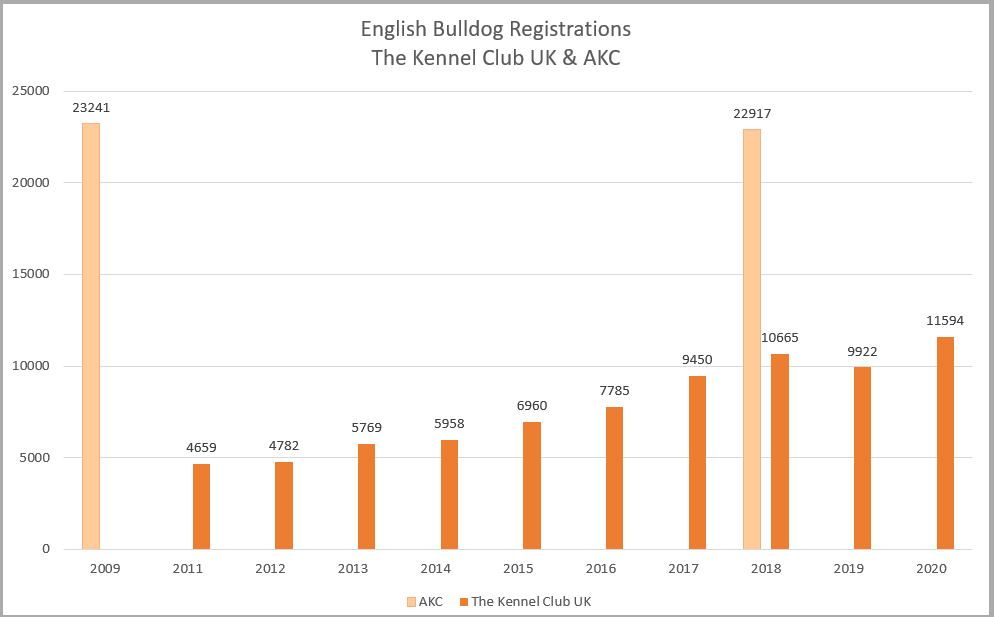
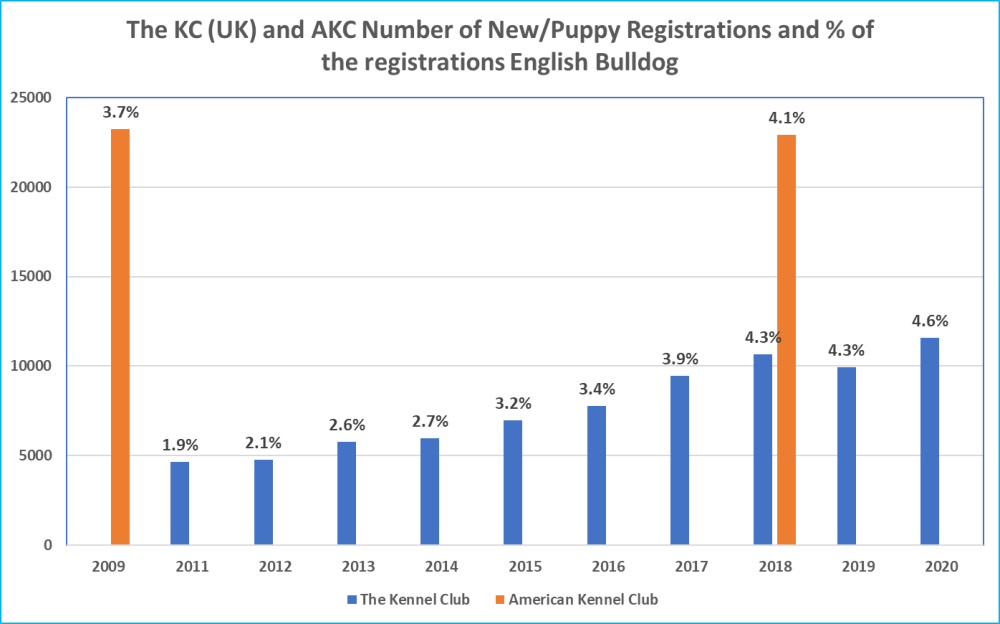
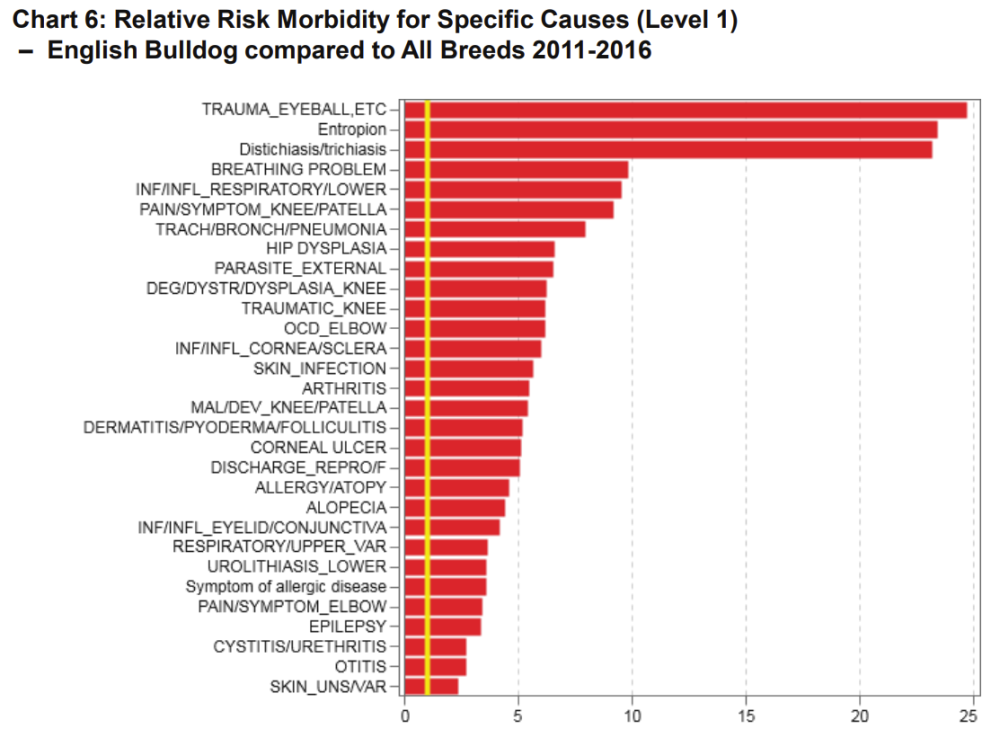
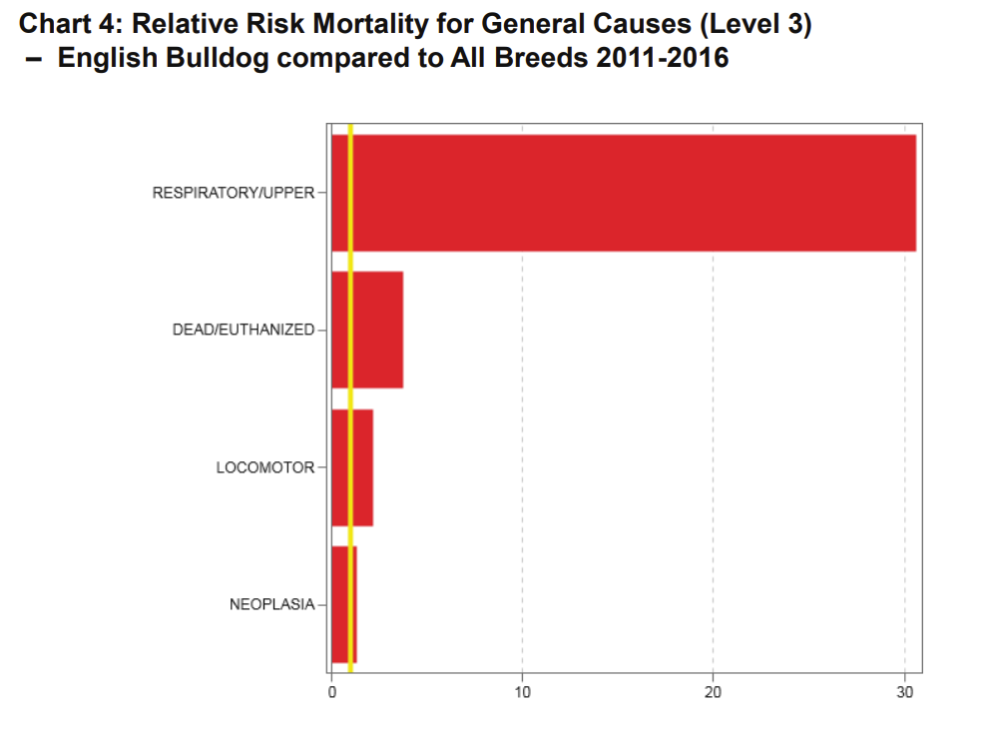
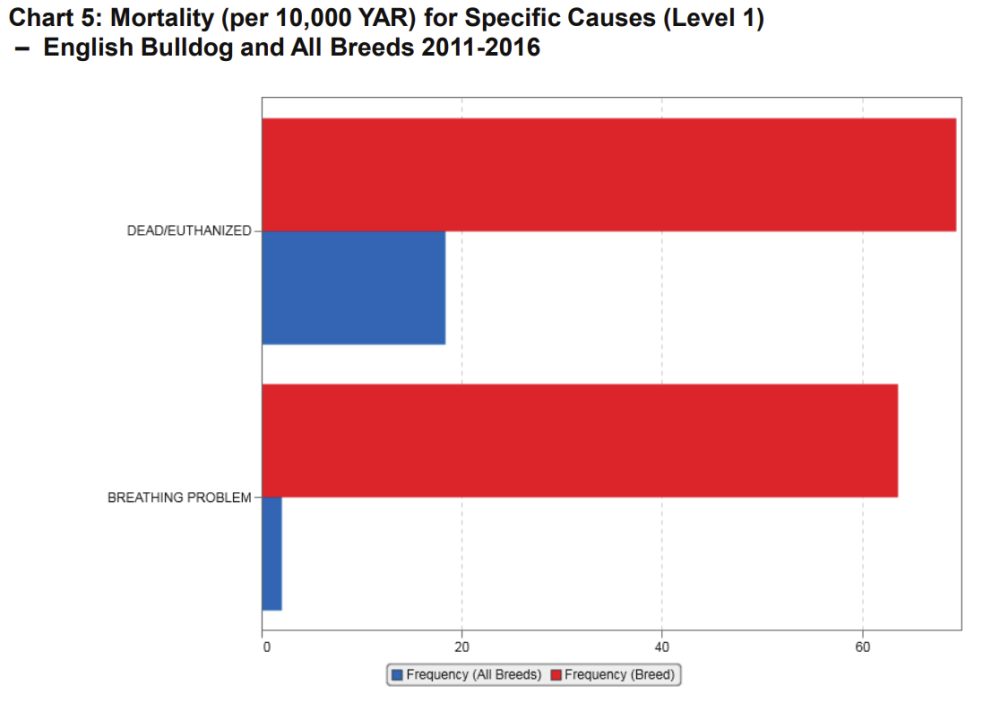
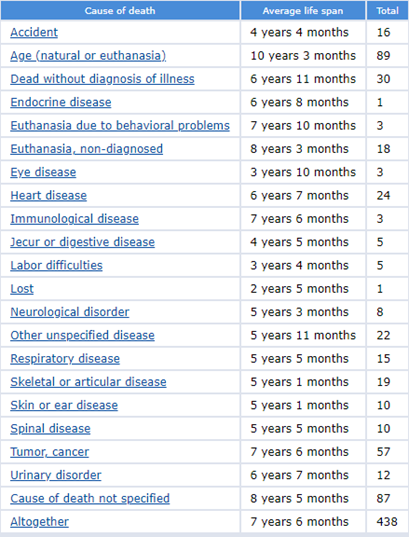
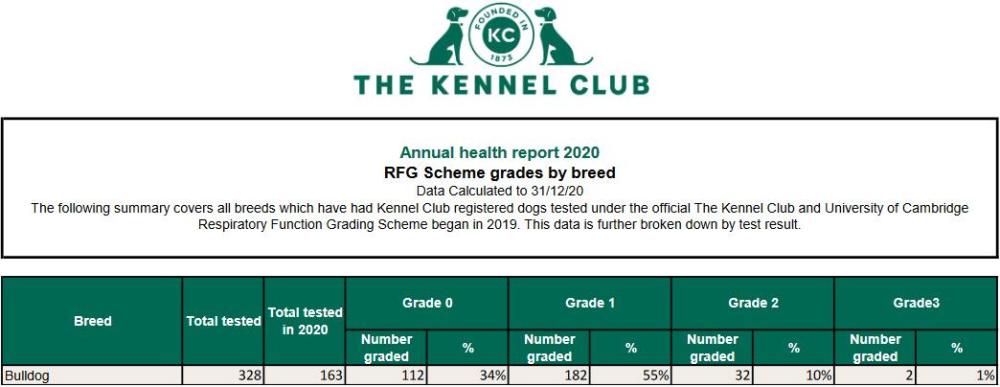
 measures being taken by the Kennel and Breed Clubs to improve health and welfare in brachycephalic dog breeds, there is a need for recognition that
measures being taken by the Kennel and Breed Clubs to improve health and welfare in brachycephalic dog breeds, there is a need for recognition that 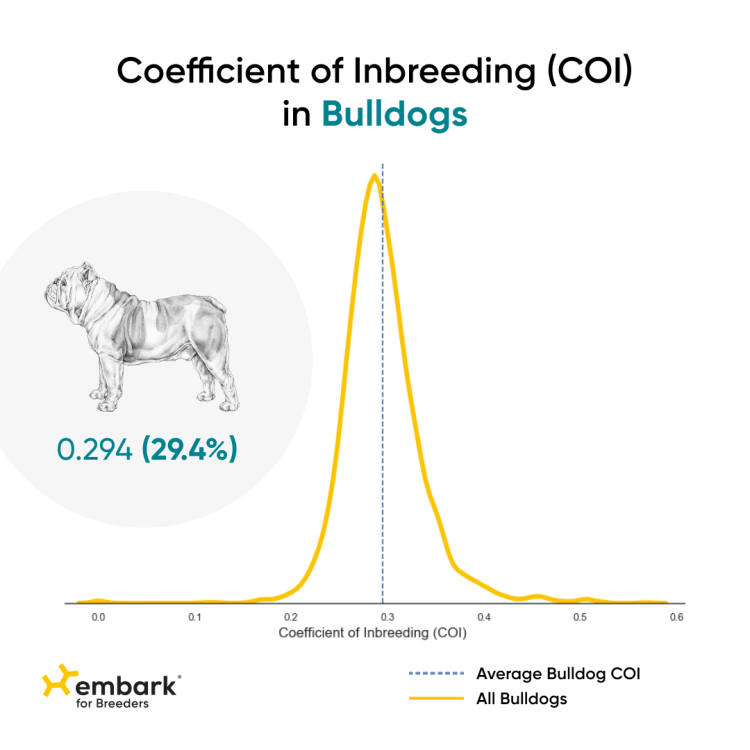

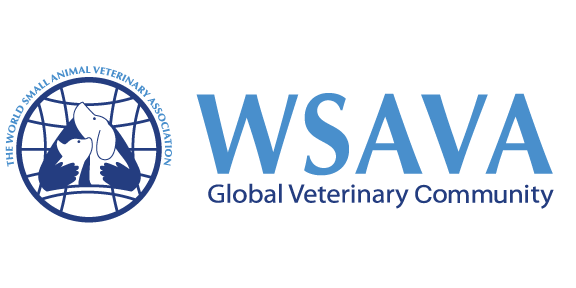

Recommended Comments
There are no comments to display.
Join the conversation
You can post now and register later. If you have an account, sign in now to post with your account.
Note: Your post will require moderator approval before it will be visible.